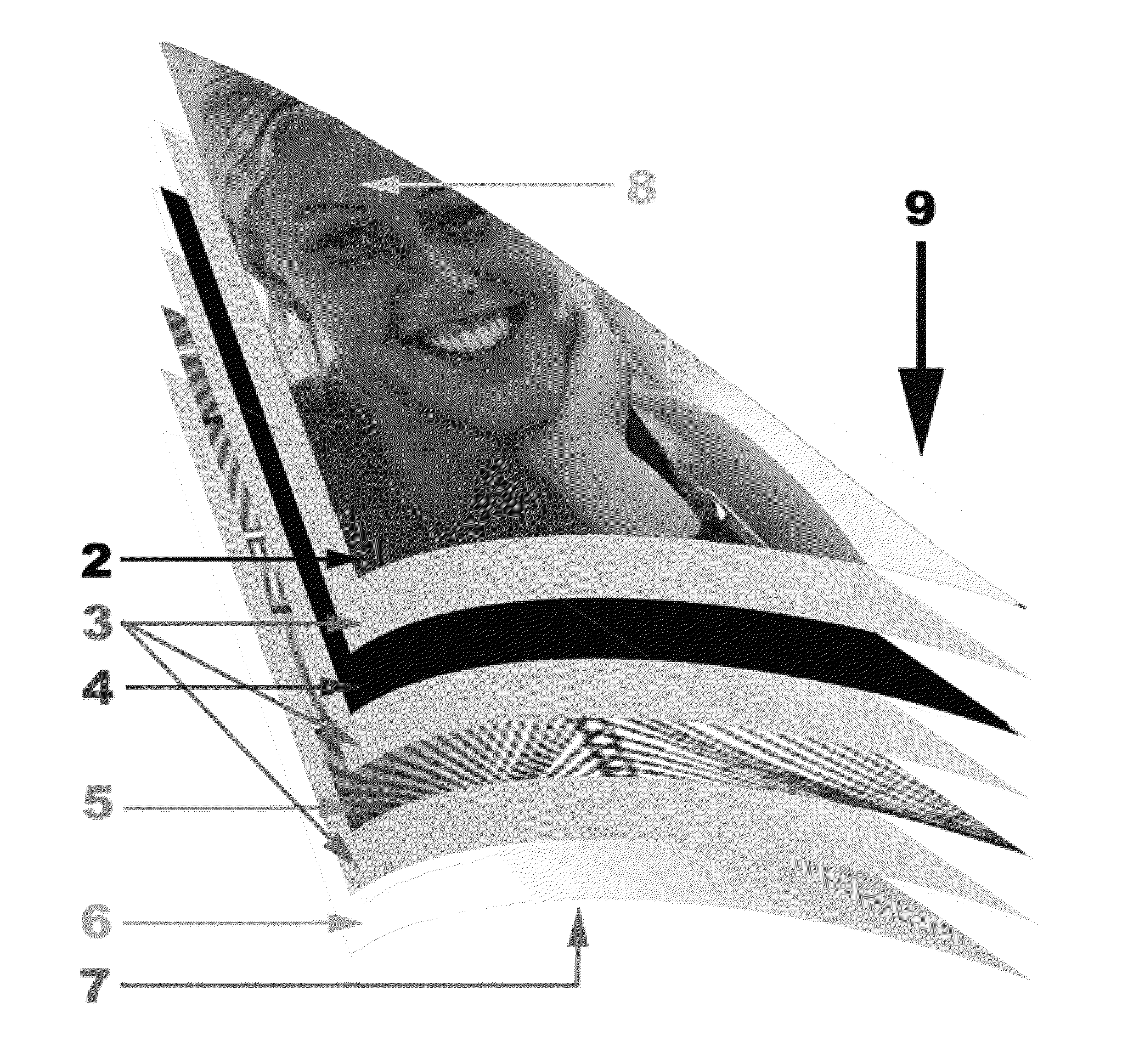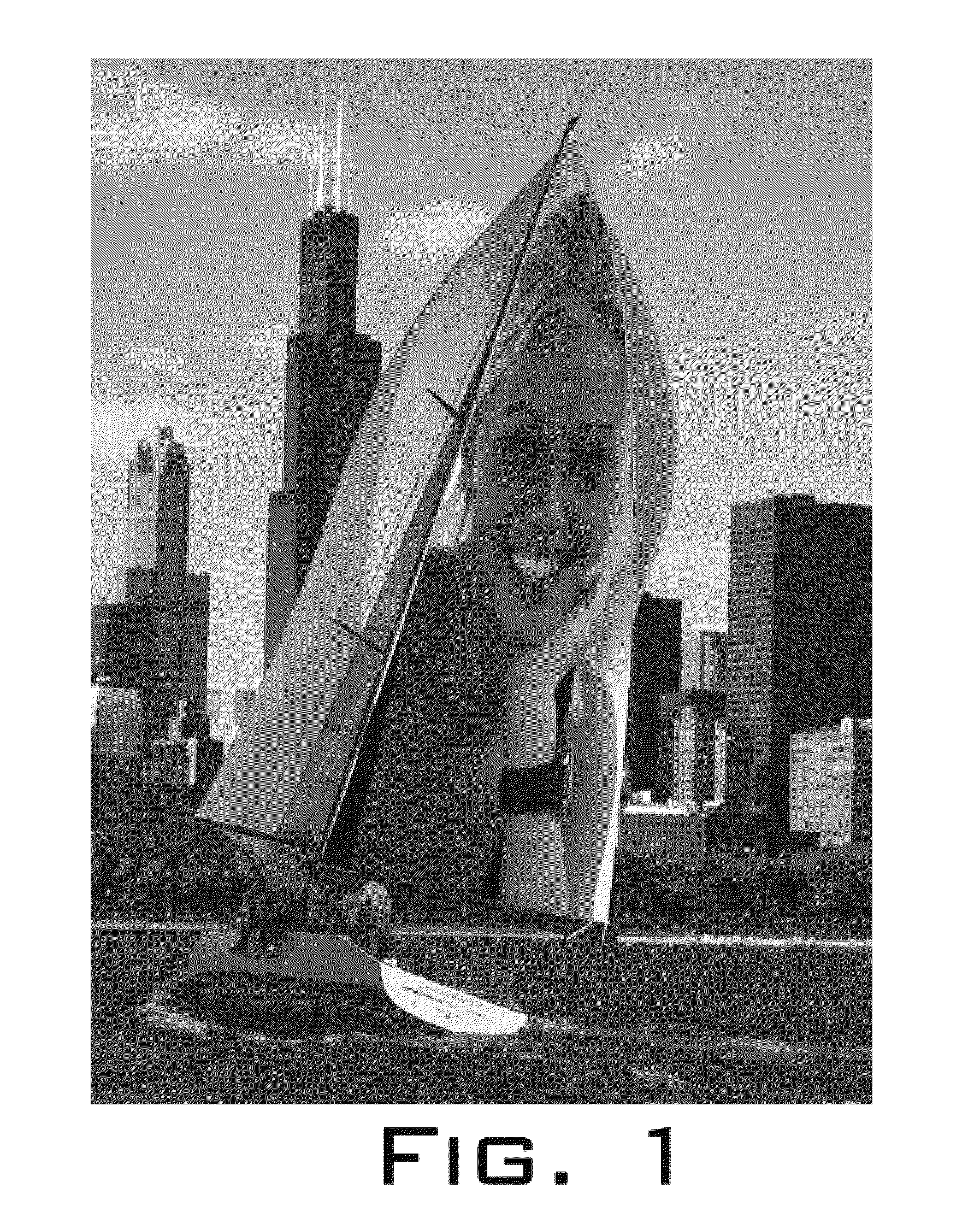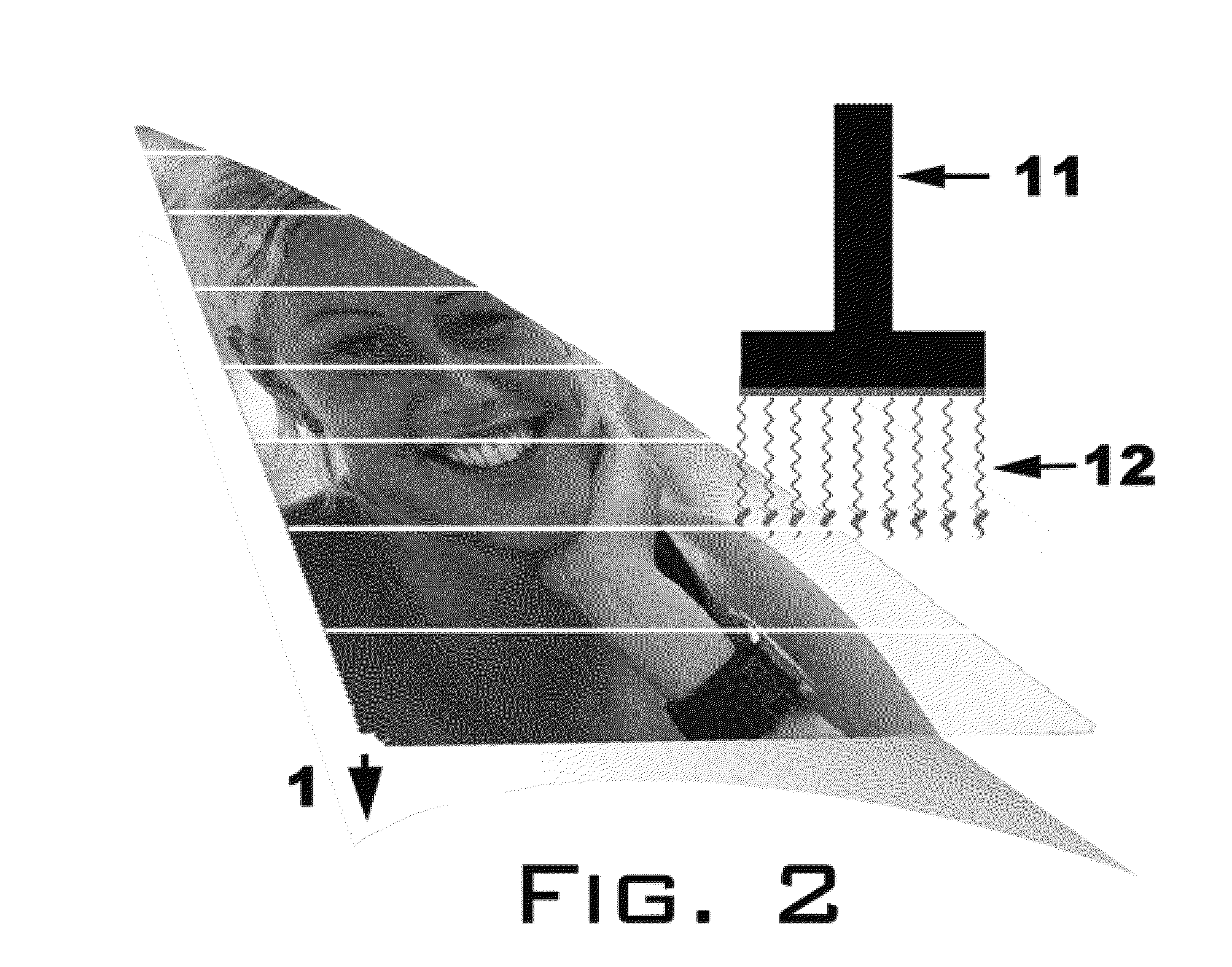Sail and method of manufacture thereof
a sail and sail technology, applied in the field of sails, can solve problems such as distortion of images, and achieve the effect of high resolution, high resolution, and high resolution
- Summary
- Abstract
- Description
- Claims
- Application Information
AI Technical Summary
Benefits of technology
Problems solved by technology
Method used
Image
Examples
example 1
[0037]A sail 9 in accordance with one embodiment of the instant invention is manufactured with two sheets 2, 6 of clear, white or colored Mylar film from Dupont Tiejin Films with imaging / visible content 1 pre-affixed. In the exemplary embodiment, the thickness of the Mylar for both the Mylar sheets 2, 6 and an optional black Mylar sheet 4 is approximately 0.05 mil to 0.75 mil in thickness (one mil=0.001 inches or about 0.02 millimeters). Alternatively, other thicknesses of the Mylar may be used as desired for the particular sailing application. The finished sail 9 includes at least two sheets 2, 6 of clear, white or colored Mylar film sandwiching a scrim 5 of yarns placed in a load bearing fashion commonly referred to as Load Path technology. The yarns used to form the scrim 5 may consist of different materials including, but not limited to, carbon fiber yarns, Kevlar yarns, Spectra yarns, nylon yarns, Vectran yarns, and other yarns commonly used in the manufacture of high performan...
example 2
[0039]A sail 9 in accordance with another embodiment of the instant invention is manufactured in a manner similar to the sail 9 of Example 1, except that the outer sail layers 2, 6 are not pre-imaged (i.e., do not have the image pre-affixed). In this case, ink transfer sheets 20, 21 having the desired content mirror-imaged thereon are placed upon the outer layers 2, 6 prior to lamination. Heat activation and pressure during lamination cause the images from the ink transfer sheets 20, 21 to transfer from the transfer sheets 20, 21 to the exterior surfaces of the outer sail layers 2, 6 to produce the images on the sail surfaces. After lamination, the transfer sheets 20, 21 are peeled away from the sail 9 and discarded. This same process can be applied to any sail material, whether it be Dacron, Mylar, Taffeta, Canvas, Polyester, or Cotton and whether it be new, used, completed or unassembled. This process may or may not make any portion of the sail opaque, although including some form...
PUM
| Property | Measurement | Unit |
|---|---|---|
| Temperature | aaaaa | aaaaa |
| Pressure | aaaaa | aaaaa |
| Adhesivity | aaaaa | aaaaa |
Abstract
Description
Claims
Application Information
 Login to View More
Login to View More - R&D
- Intellectual Property
- Life Sciences
- Materials
- Tech Scout
- Unparalleled Data Quality
- Higher Quality Content
- 60% Fewer Hallucinations
Browse by: Latest US Patents, China's latest patents, Technical Efficacy Thesaurus, Application Domain, Technology Topic, Popular Technical Reports.
© 2025 PatSnap. All rights reserved.Legal|Privacy policy|Modern Slavery Act Transparency Statement|Sitemap|About US| Contact US: help@patsnap.com



